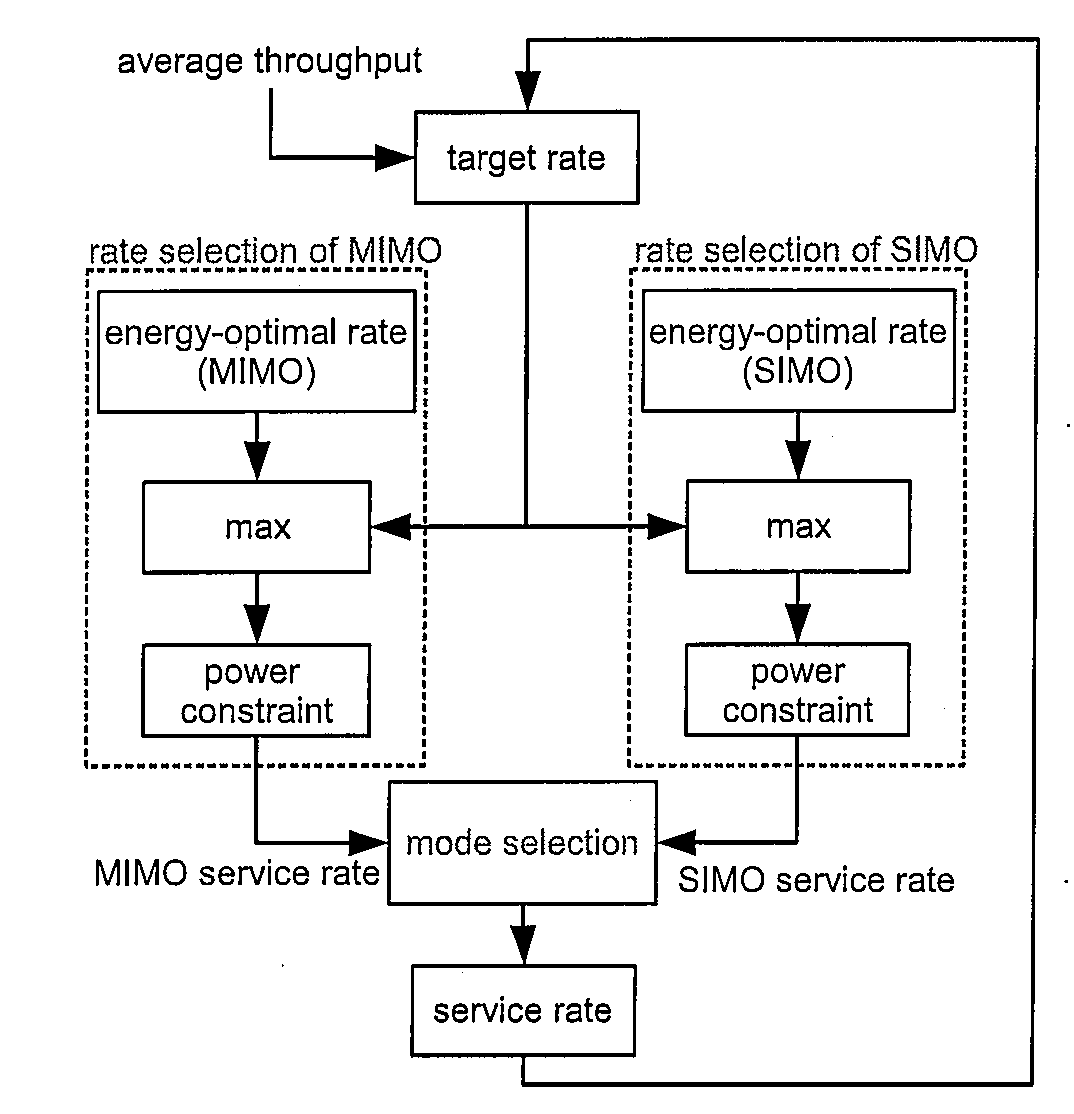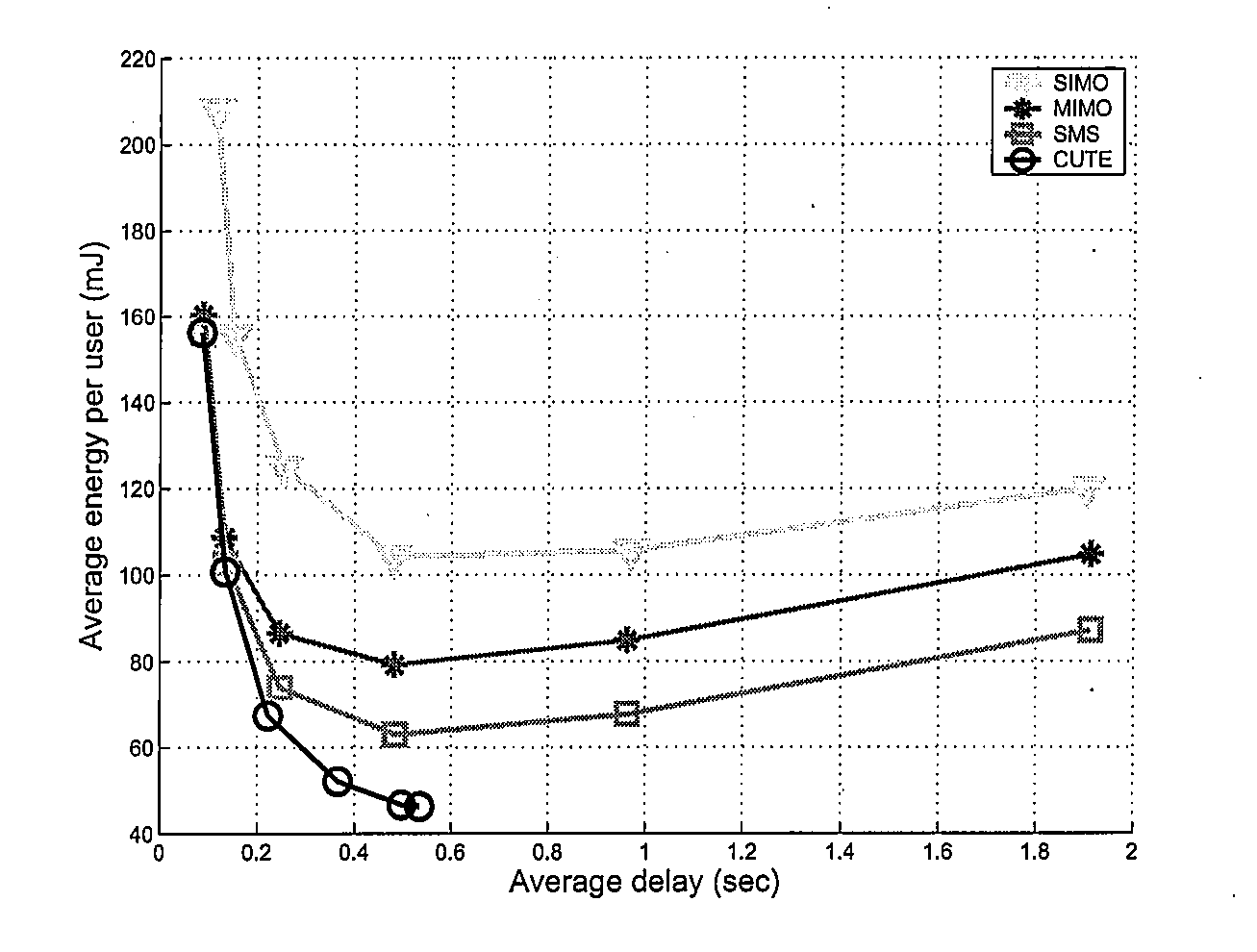Background
It is generally accepted that Multiple-Input Multiple-Output (MIMO) achieves better energy efficiency than Single-Input Multiple-Output (SIMO) thanks to spatial multiplexing gain. However, when circuit power is considered, MIMO may consume more power than SIMO at low spectral efficiency. This is because MIMO has multiple antennas and transmission chains so it consumes more fixed processing power (called “circuit power” hereafter). Thus circuit power hinders the use of MIMO on the uplink. This is one of the reasons why several emerging standards do not use MIMO for the uplink.
Mitigating the adverse impact of circuit power remains crucial to enabling the use of MIMO for the uplink. This invention enables the use of two transmit antennas at the mobile terminal (MT) by adaptively switching between MIMO and SIMO.
Technology description
Researchers at The University of Texas at Austin have developed a method to save energy consumption of mobile terminals (MTs) and extend the battery lifetime. Specifically, it reduces the uplink transmit energy consumption by adaptively switching transmission mode between Multiple-Input Multiple-Output (MIMO) and Single-Input Multiple-Output (SIMO). This invention is named CUTE, which stands for Conserve User Terminals’ Energy. When the system is underutilized, the MT operates with SIMO at low spectral efficiency to save energy, but when congested, the MT operates with MIMO at high spectral efficiency to increase throughput. This is done in an adaptive way considering two aspects—dynamic network traffic and channel variations.
Results
More results can be found in the peer-reviewed paper here.
 | Fig. 1 shows the overall operation of the proposed apparatus. For each transmission mode, either MIMO or SIMO, energy-optimal transmission rate is determined by an algorithm that considers circuit power, idling power, and network traffic condition. Then, the service rate of each mode is determined by taking the maximum of energy-optimal transmission rate and target rate. Mode selection algorithm then selects the transmission mode between MIMO and SIMO. Once the transmission mode and service rate is determined, the mobile terminal uses it for one time frame and updates its target rate of the next time frame considering the user's throughput requirement and past service rate history. This procedure repeats in each time frame. |
 | Fig. 2 shows the energy-delay curves when circuit and idling power are factored. As can be seen, simple mode switching (SMS) saves energy significantly against MIMO. An interesting observation is that three energy curves of SIMO, MIMO and SMS go up again as the delays grow. This is because the effect of idling energy emerges when the file transfer delay is long. Hence, we cannot fully exploit energy-delay tradeoff. This problem is effectively solved by the proposed algorithm CUTE. CUTE removes the undesirable points (i.e., long delay and large energy consumption) by incorporating the energy-optimal transmission rate; even if the user specifies an excessively low target throughput (and large delay), the proposed algorithm automatically sends faster than the user's requirement to save energy. We see that energy savings of CUTE versus MIMO are significant; e.g., more than 50% at 0.5 second delay. |

